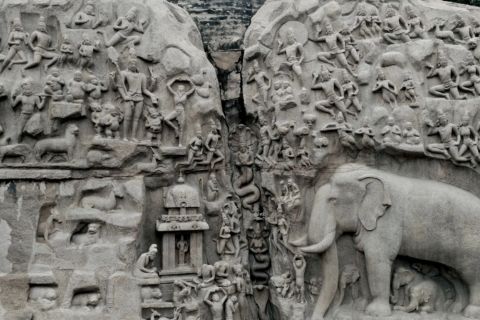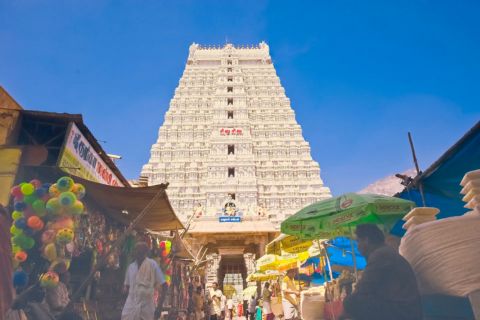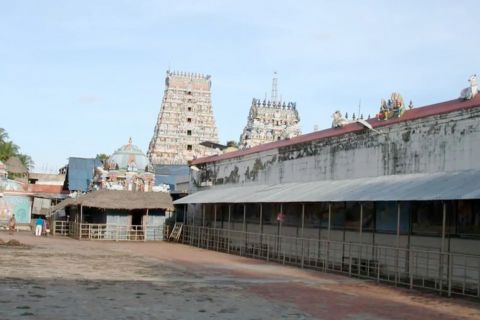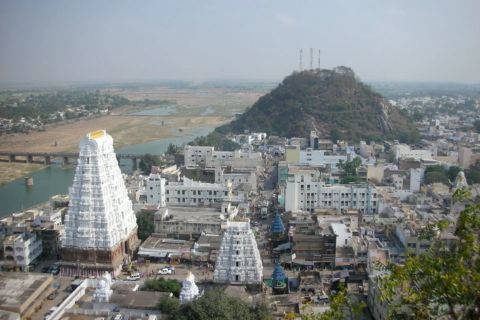
Guindy National Park Chennai Entry Fee
- 30 per person for Adults
- 10 per person for Children (Between 5 to 12 years of age)
- 60 per person for Adults
- 10 per person for Children (Between 5 to 12 years of age)
- 200 for Video Camera
For National park
For Children's park
Guindy National Park Chennai Phone
044 2950 5150
Rating:  | 4/5 stars
| 4/5 stars
Based on total 62 reviews
Guindy National Park Chennai Address: Rangeguindy, Opp IIT Madras, Guindy National Park, Guindy, Chennai, Tamil Nadu, 600022, India
Chennai Tour Packages
Guindy National Park Chennai Timings
| Day | Timing |
|---|---|
| Monday | 9:00 am – 5:30 pm (National Park & Snake Park) 9:30 am – 5:30 pm (Children’s Park) |
| Tuesday | Closed / Holiday |
| Wednesday | 9:00 am – 5:30 pm (National Park & Snake Park) 9:30 am – 5:30 pm (Children’s Park) |
| Thursday | 9:00 am – 5:30 pm (National Park & Snake Park) 9:30 am – 5:30 pm (Children’s Park) |
| Friday | 9:00 am – 5:30 pm (National Park & Snake Park) 9:30 am – 5:30 pm (Children’s Park) |
| Saturday | 9:00 am – 5:30 pm (National Park & Snake Park) 9:30 am – 5:30 pm (Children’s Park) |
| Sunday | 9:00 am – 5:30 pm (National Park & Snake Park) 9:30 am – 5:30 pm (Children’s Park) |
The capital city of Tamil Nadu Chennai brims with modern delights and coastlines adorned with beautiful beaches. Visitors flock into the fourth largest city of the country to discover the amazing ancient culture. It has few spots of interest for the wildlife aficionados too.
One of the natural spectacles of the city is a small but renowned Guindy National Park. Spanning over an area of 2.70 square kilometres, it is a great habitat of varied species of fauna coupled with the tropical dry evergreen forests of the Coromandel Coast.
Well protected by the state government, the park is considered to be the eighth smallest National Park of India. Adjacent to the National Park is the exciting National Children’s Park attracting the younger lot. Another attraction of the National Park is the Snake Park.
History of Guindy National Park Chennai
Initially a game reserve spread over an area of 5 km square, Guindy National Park was a part of the tropical dry evergreen forest known as the Guindy Forest. Later a small part of the reserve was transformed into a garden space. In 1672-1678 a residence along with the garden space called the Guindy Lodge was established by the then Governor, William Langhorne.
Rest of the forest area was owned by a Britisher named Gilbert Roderick, who sold it to the Government for an agreed sum of Rs. 35,000 in 1821. Around 505 hectares of area was set as a Reserve Forest in 1910 and in 1945, Chital or Spotted deer was the first animal to be brought to the Forest.
A large area of the forest was handed over to the government from 1961 to 1977 for the construction of various memorials and educational institutions. In 1958 a vast area of the forest was given for the construction of the Indian Institute of Technology.
Rajaji memorial was built in 1974 and Kamaraj memorial was built in 1975. Tamil Nadu Forest department took charge of the forest in the year 1977. A wall was then constructed to demarcate the Indian Institute of Technology and the Raj Bhavan from the Park.
Established in 1972 by the revered herpetologist and wildlife conservationist, Romulus Whitaker, the Guindy Snake Park boasts of being the first reptile park of the country. Romulus Whitaker also founded the Madras Crocodile Bank Trust and Centre for Herpetology in 1976.
With the presence of a splendid variety of snakes, it attracts several pharmaceutical companies that help them produce anti-venom drugs. In 1975, the Central Zoo Authority honoured the Snake Park with the status of a medium Zoo.
Several trees were uprooted during the 2016 Vardah cyclone. Stretching from Sardar Patel road from Adyar to Anna Salai at the Guindy junction, Guindy National Park draws more than seven lac visitors annually.
Image Gallery of Guindy National Park Chennai
Flora and Fauna at Guindy National Park Chennai
Main attraction of the park is the 20 million years old Specimen of Tyrannosaurus. The wildlife population of the Park includes Chital, Sloth Bear, dhole, and Indian spotted chevrotain, Spotted deer, common Palm Civet, Small Liven Civet, Bonnet Macaque and Pangolin.
Visitors will find solitude in the national park that provides the habitat for 14 species of mammals including Blackbuck, Hyena, Hedgehog, Common Mongoose and Three-Striped Palm Squirrel.
It is home to the Indian hare or the black-naped hare which are named so because of the patch of black fur that runs along the nape of its neck. Tourists would enjoy stunning views of the inspiring tropical dry evergreen forests that houses around 24 varieties of trees and 350 species of plants.
Major trees found in the forests are Sugar-Apple, Manilkara Hexandra, Mimusops Elengi, Strychnine, Flacourtia Indica, Eugenia, drypetes Sepiaria,Ceylon Ebony, Atlantia Monophylla, Wood-Apple.Tall deciduous trees like Albizia Amara, Sal and Chloroxylon have disappeared today and the forest have more of the small canopy trees.
Covered with shrubs, crawlers, herbs and grasses it is also home to grasshoppers, crabs, scorpions and more than 60 species of butterflies and spiders respectively. Bird lovers try to spot their favourite ones among the 130 species of the winged creatures found in the park.
Crow Pheasant, Shrikes, Pariah Kite, Tailor Bird, Garganeys, Medium Egrets, Pond Herons, Parrot, Black-winged Kite, Eagle, Golden backed Woodpecker, Pochard, open-billed Storks, Honey Buzzard are few of the birds found in the park.
People have rarely spotted the Eurasian Hobby and the dollar Bird in the park. Eurasian Hobby is a small elegant falcon characterised by a broken white band across the nape, a narrow white eyebrow and a brownish black plumage.
One-sixth of the park is open grasslands providing a perfect habitat for the black bucks and the spotted deer. There are around 400 blackbucks and two thousand spotted deer in the park. Signboards and walking paths guides the visitors to move through the National Park.
Guindy Snake Park Chennai
Set next to the National Park, the Guindy Snake Park houses reptiles like the Pythons, Adders, Vipers, King Kobras and Fan-throated Lizard, Geckos, Star Tortoise, giant Turtles, Kraits, Indian Monitor Lizard and Chameleons.
It also displays reptiles like Gharial, Slider Turtle, Rock Lizard, Green Iguana, Indian flapshell Turtle, Siamese Crocodile, Spectacled Cobra, dog-faced water snake, common vine snake, common cat snake, Olive keelback, Common Wolf Snake, Common Sand boa, Indian Rock Python and Whitaker’s Boa. An inspiring museum displaying the specimens of reptiles and amphibians is another interesting feature of the Guindy Snake Park.
Children’s Park at Guindy National Park Chennai
Spread over an area of 22 acres, the Children’s Park houses a variety of birds and animals that grabs the attention of the children. Twenty million years old tree is a key draw of the Children’s park. Swings, Elephant and Pony rides as well as a mini railway keep the kids engaged.
Animals found in the Children’s Park are Black Buck, Sambar, Spotted deer, Porcupine, Jackal, Python, Night Heron, Mongoose, Common Otter, Common Langur, Grey Pelican, Cockatiel and Common Peafowl.
Entry Fees and Timings of Guindy National Park Chennai
There is no entry fee for children below five years. Entry fee for Children between 5 to 12 years is Rs.10 and for adults is Rs.30 for National park.Entry fee for Children between 5 to 12 years is Rs.10 and for adults is Rs.60 for Children's park. National Park and Snake Park are open for all from 9:00 AM in the morning till 5:30 PM in the evening on all days except for Tuesdays. Children’s Park is accessible from 9:30 AM in the morning till 5:30 PM in the evening except for Tuesdays.
Parking Vehicle Charges at Guindy National Park Chennai
The parking charge for heavy vehicles is Rs.50 each and Rs.20 for motor car, Van and MotorCycle.
Photography Charges at Guindy National Park Chennai
Photography is permitted within the park at a reasonable cost.Visitors can use Video Camera by paying Rs.200.
Food
Though food stalls are available in the park, it is recommended to keep enough snacks and water handy as it would involve great amount of strolling.
Nearby Attractions
Major spectacles located in its vicinity are Birla Planetarium, Phoenix Marketcity, and MGR film city. Discover the wild at Guindy National Park and other incredible treasures of the city choosing from our varied range of one day Chennai customizable itineraries.
How to Reach Guindy National Park Chennai?
Chennai has an extensive road network connecting it to the various other cities of the country. Buses can be boarded from the Chennai Mofussil Bus Terminal (CBMT) which has buses operated by both the government and private operators.
It has one of the busiest airports of the country. Several daily flights take off to various parts of the country from the Kamaraj terminal and several flights take off to the other parts of the country from the Anna terminal.
Chennai Egmore railway station has trains connecting the capital city with the other cities of the state. Trains linking Chennai to other cities of the country can be boarded from the Chennai Central Railway station.
Guindy National Park is located at a distance of 11.8 km from the Central Railway Station, and 10.2 km from the airport. It lies next to the Rajbhavan and opposite to the Indian Institute of Technology Chennai.
People can take private cab, taxi, auto rickshaw or local buses from the bus station, airport or railway station to reach the park. If you are travelling by suburban trains then the nearest station is the Guindy station which is only 1 km away from the National Park.
FAQs about Guindy National Park Chennai
Why to visit Guindy National Park?
The celebrated National Park of the city should be visited if you want to get close with the wild. Bird watching is a rewarding experience for the bird lovers.
When to visit Guindy National Park?
Guindy National Park can be visited anytime during the year however the favourite time of travellers visiting Chennai is from November to February when the temperatures are less as compared to the rest of the year.










